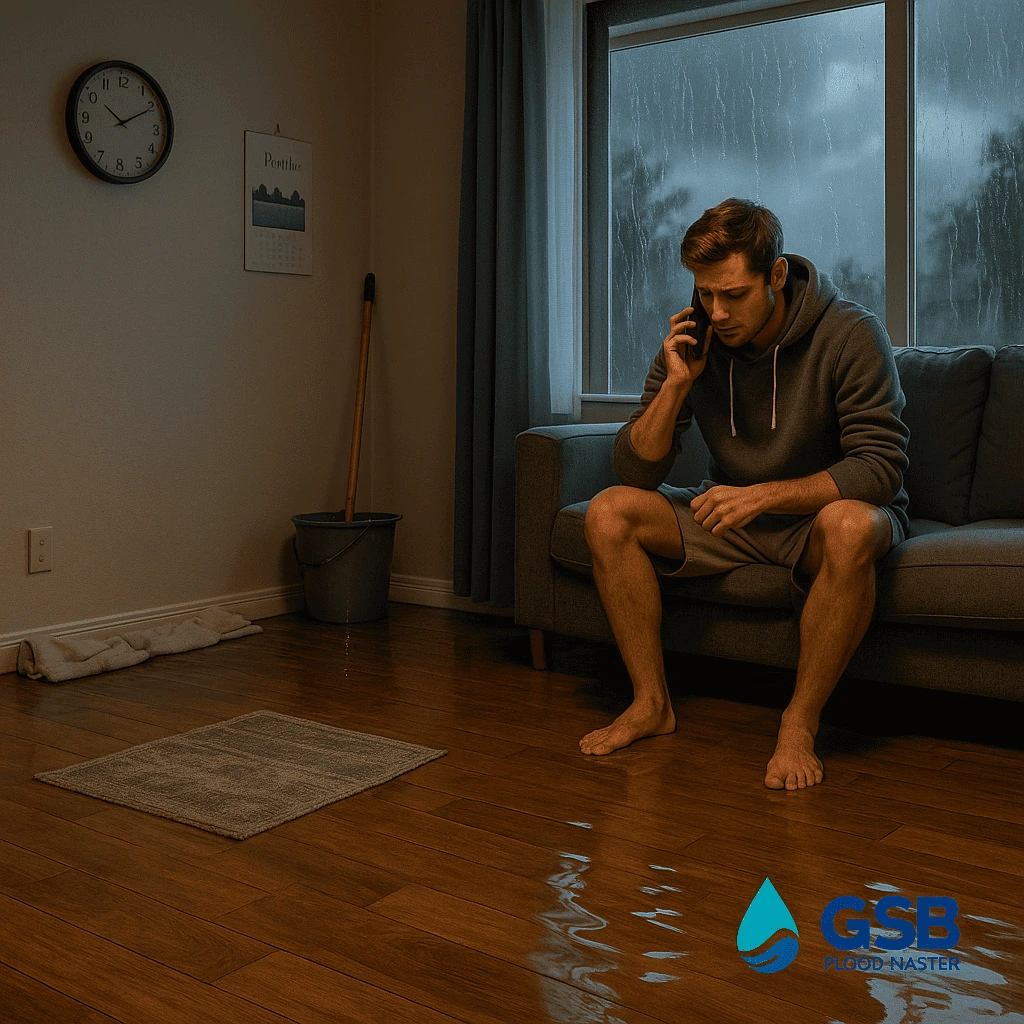Perth’s unpredictable weather patterns have become increasingly challenging for homeowners across the metropolitan area. From the intense winter storms that sweep across the Swan Coastal Plain to the occasional summer flash floods, water damage has emerged as one of the most pressing concerns for residents in suburbs ranging from Fremantle to Joondalup. The recent severe weather events that impacted areas like Cannington, Midland, and surrounding regions have highlighted just how vulnerable our homes can be to flooding.
When water infiltrates your home, time becomes your most critical ally. What might initially appear as a manageable puddle on your kitchen tiles can rapidly escalate into a devastating structural nightmare involving warped floorboards, compromised subflooring, and dangerous mold growth. Perth’s coastal humidity, particularly during the warmer months, can accelerate these problems exponentially, turning a minor water incident into a major renovation project within just 24 to 48 hours.
This comprehensive guide walks you through the essential steps every Perth homeowner needs to know when facing flooded floors. From immediate safety protocols to long-term restoration strategies, we’ll cover everything from DIY solutions to recognizing when professional flood damage restoration in Perth becomes absolutely necessary. Understanding these processes can mean the difference between a quick recovery and months of costly repairs.
What to Do When Your Floor Is Flooded in Perth

Floods in Perth homes can strike due to sudden storms, plumbing failures, or burst pipes — all too common in older suburbs like Fremantle or newer developments where soil movement affects underground pipes. Here’s a detailed yet digestible guide on how to manage floor flooding step by step.
1. Prioritize Safety First – Before Anything Else
Before stepping into any flooded area, your priority should be personal safety and electrical hazards.
🛑 What You Should Do:
- Switch off electricity from the main if water has reached power points or appliances.
- If it’s unsafe to reach, call Western Power or an electrician — don’t risk it.
- Wear protective gear: rubber boots, gloves, and ideally a torch or headlamp.
- Avoid grey or murky water — especially in homes with possible sewage backflow.
- If there’s a strong smell (chemicals or sewage), evacuate immediately.
- Do not assume stormwater is safe — Perth’s mix of sandy soil and construction runoff can contaminate even clear-looking water.
💡 Tip: If you’re renting, notify your property manager or strata immediately. Delays may void certain insurance conditions.
2. Identify the Water Type – It Affects Your Next Steps
Understanding what kind of water you’re dealing with helps assess the level of risk — and whether DIY is even an option.
💧 Water Damage Categories:
- Category 1 (Clean Water)
– From burst pipes, rainwater leaks.
– Safe for quick DIY drying within 24 hours. - Category 2 (Grey Water)
– From appliances (dishwashers, washing machines) or overflows.
– May contain bacteria — disinfect thoroughly. - Category 3 (Black Water)
– From sewage, river flood, or stagnant rainwater after 48+ hrs.
– Extremely hazardous — call certified Perth water damage experts.
📷 Take photos of the water source, rooms affected, and waterlines on the wall. Insurance and restoration teams will need this proof.
3. Extract Standing Water Immediately
Tools You Can Use:
- Wet/dry vacuums or submersible pumps (available at Bunnings or hire services).
- Mops and thick towels — useful for corners or tile floors.
Things to Keep in Mind:
- Work top-down: remove water from higher levels first to prevent re-flooding.
- If flooring is timber, floating laminate, or vinyl, act fast — these materials absorb moisture quickly and may buckle within hours.
- Perth’s double-brick homes often trap water in cavities — don’t rely on surface drying alone.
4. Begin the Drying Process – Not Just Visible Surfaces
Must-Do Steps:
- Open windows and doors only if the outside humidity is low (usually fine in Perth’s drier suburbs).
- Use:
- Industrial fans
- Dehumidifiers
- Absorbent materials like desiccant packs or silica gel for enclosed spaces
- Lift rugs, carpets, and underlay — leave them in open areas to dry or dispose if they smell musty.
🧱 Note: In homes with stone or tile flooring, check grout lines — water often seeps under tiles, especially in older bathrooms and laundries.
5. Inspect for Hidden Water Damage
Some signs don’t show until days or even weeks later.
Key Areas to Check:
- Skirting boards, wall base, and drywall for softness or bubbling.
- Behind cabinets and under appliances — common areas for hidden moisture.
- Floorboards or tiles that shift when walked on — could signal swelling or subfloor damage.
- Check suspended floors in older homes (common in suburbs like Subiaco or Northbridge) for water pooling underneath.
6. Know When to Call a Professional
Even if things look manageable, certain cases call for expert intervention.
Call a Perth Water Damage Restoration Expert If:
- Water has sat for over 24–48 hours.
- There’s any mold or musty smell.
- You notice electrical issues or warping near power points.
- You’re dealing with category 2 or 3 water.
- You want to make a smooth insurance claim — most insurers trust certified reports from licensed restoration companies.
7. Begin the Insurance Process
Your insurer may cover repairs — but only if steps were taken early and documented well.
Steps to Take:
- Notify your insurer as soon as possible.
- Submit time-stamped photos/videos.
- Keep receipts of any equipment hired or bought.
- Ask if they have preferred local contractors or if you can choose your own.
- In Perth, many policies differ for storm vs plumbing-related flooding — check your PDS (Product Disclosure Statement).
Final Thoughts: Fast Action Saves Thousands
Water damage escalates quickly — from damp floors to warped structures and mold outbreaks. And in Perth, where many homes use materials that hold moisture (like limestone or cavity brick), quick action is essential.
If in doubt, call a certified water damage restoration team. They know how to:
- Use moisture meters
- Prevent structural damage
- Ensure safe drying
- Help you navigate insurance red tape
